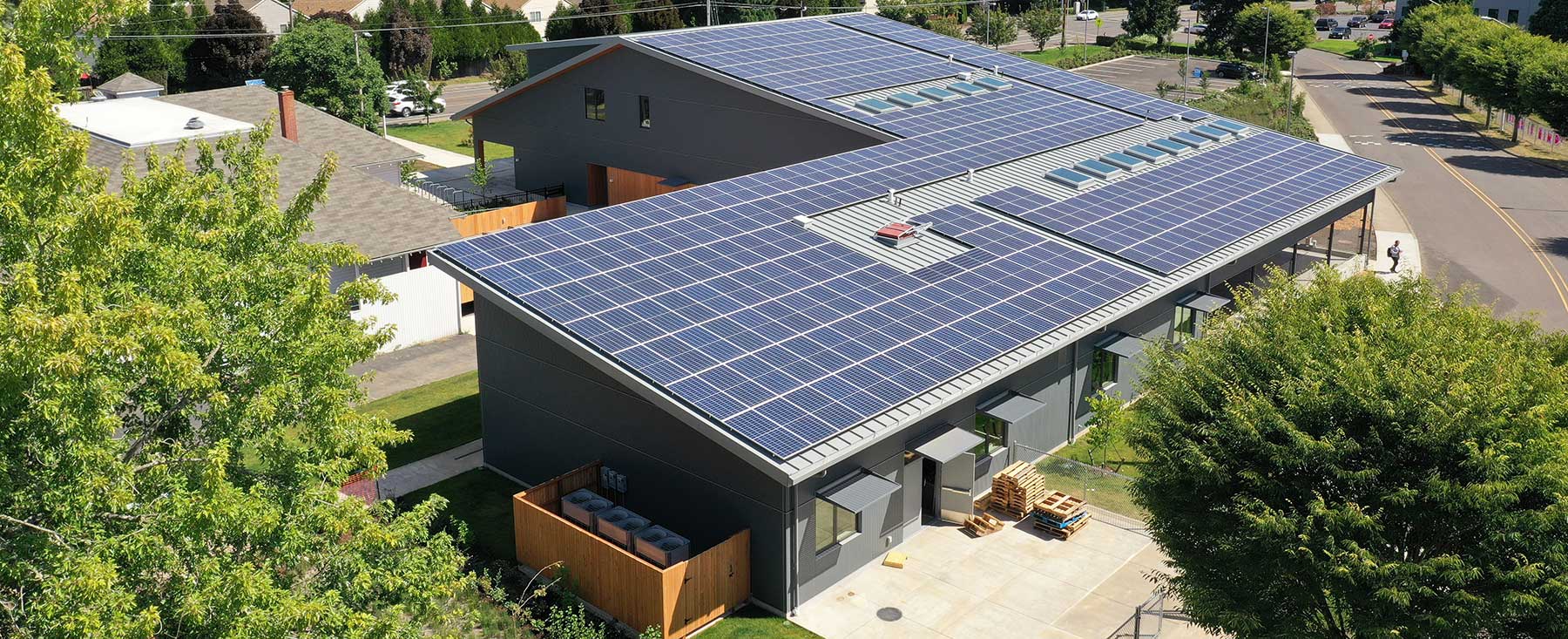The site of Creekside Community High School is less than a half-mile away from the Tigard High School in Tigard, Oregon. But the two facilities couldn’t be further apart.
Creekside–the Tigard-Tualatin School District’s center for students requiring a non-traditional path toward completing their education–has long resided in an aging schoolhouse wedged just off the driveway leading into the district. From there, students can see up the road to Tigard High School, its football, soccer, and baseball fields; tennis courts; swim center; and student theater. On site, there was a palpable sense that the alternative education path meant starting life on the outside looking in.
But Creekside is changing that. With the completion of its newest addition, the school will achieve net-zero energy-generating enough power on-site to offset, or even exceed, the needs of the facility. In an environment where students are in real need of inspiration, Creekside is now offering them not just a point of pride, but a facility that works to improve their education experience as a whole.
The Pitch: Inspire Through Design
The project’s primary ambition is to inspire. The students who attend Creekside are on the alternative education track. That is, students who require an approach to their education that is augmented from what is offered in a traditional public school.
To learn more about our education design experience, visit our project portfolio at glumac.com
The trouble is these schools tend to be afterthoughts – existing in repurposed storefronts; modular trailers; or, in Creekside’s case, an old schoolhouse. With a population of students in need of more attention and support to complete their education, the design of their surroundings can play a critical factor. By creating a space they can be proud to attend and that is outfitted with modern learning tools, their odds of success stand to improve.
How It’s Done: Simplify the Path to Net Zero
Designing for net-zero energy is often misunderstood as a lengthy and costly addition to the design process that complicates the delivery of otherwise high-performing buildings. However, complexity isn’t necessarily the key. While designing a facility to reach net-zero energy goes beyond a basic energy-in/energy-out equation, it has much more to do with mitigating energy needs from across the building’s mechanical, electrical, and plumbing systems. This means finding small amounts to take from each of these buckets, a piece at a time until the need is manageable by an on-site supply.
Continuing reading at trimtab.living-future.org

